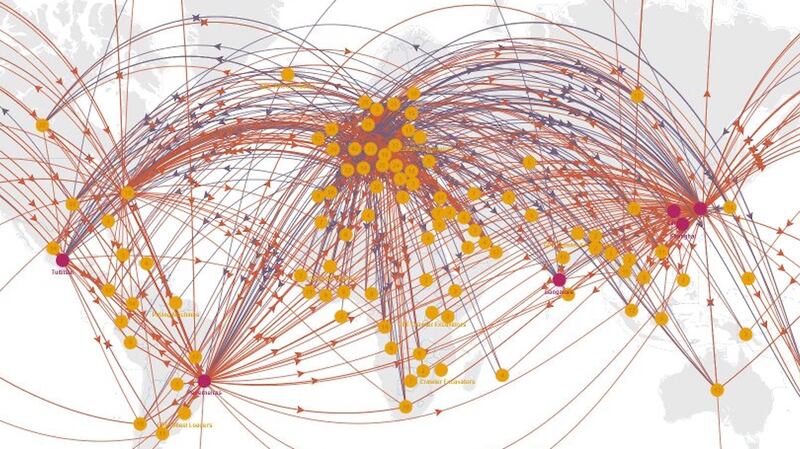
The Business of Fashion
Agenda-setting intelligence, analysis and advice for the global fashion community.

Agenda-setting intelligence, analysis and advice for the global fashion community.

The author has shared a YouTube video.
You will need to accept and consent to the use of cookies and similar technologies by our third-party partners (including: YouTube, Instagram or Twitter), in order to view embedded content in this article and others you may visit in future.
NEW YORK, United States — Large luxury goods makers have long emphasised the cultural heritage of their brands and the provenance of their products. But in search of business efficiencies, these same luxury companies — who must ultimately answer to shareholders — increasingly source materials and labour outside their home markets, especially for their more affordable lines, creating a disconnect between consumer perception and manufacturing reality.
As consumers increasingly scrutinise luxury goods purchases, and craftsmanship, authenticity and heritage take centre stage in major advertising campaigns for brands like Gucci and Louis Vuitton, this disconnect has become more pronounced. Indeed, earlier this year, the UK's Advertising Standards Agency banned two Louis Vuitton ads for misleading the public into thinking that the predominantly machine-made bags were handcrafted by European artisans.
Going forward, a new generation of digital tracing technologies may have the ability to pull back the curtain on materials and labour sourcing and give consumers the answers they are looking for.
Sourcemap, "an open source and open data supply chain publishing platform" created by MIT's Media Lab offers a glimpse of a rapidly approaching future in which consumers will be able to easily discover, share and discuss where and how their products are made, down to the origin of specific materials and means of shipping.
ADVERTISEMENT
In a note to New York Times "Consumed" columnist Rob Walker, Matthew Hockenberry at MIT describes the Sourcemap platform: "Companies (and investigative consumers, academics and journalists) can use Sourcemap to share the supply chains behind products and show us all exactly where they come from… We're not quite there yet, but we can definitely tell you where some things come from. On the site you can find things like Ikea beds, Tesla roadsters, iPods, where Whole Foods gets some of its ingredients, bicycles, Sony PSPs — there are even a couple of planes on there (Airbus and Boeing)."
This kind of radical digital traceability presents a serious challenge to those luxury brands who have played the provenance card to be more transparent about exactly where and how their products are made. But it also presents a powerful opportunity for brands who are able to authentically differentiate themselves on materials and manufacturing standards.
Icebreaker, a New Zealand-based company that specialises in active clothing made from merino wool, has tagged its products with "Baacodes," which when entered into the brand's website, let consumers identify the high country sheep stations that produce the wool in their garments, watch videos of the sheep farmers, and follow the supply chain, from fibre sourcing to sewing.
Meanwhile, California-based outdoor clothing company Patagonia operates a website called "The Footprint Chronicles" which lets consumers track the journey of their products through the global supply chain and examine the identities, locations and manufacturing practices of Patagonia's business partners, as well as calculate a garment's carbon footprint.
Large clothing retailers are getting serious about supply chain transparency, as well. Earlier this year, as part of its high profile corporate sustainability initiative Plan A, Marks & Spencer said it would become the first major retailer to ensure full traceability of the key raw materials used in its clothing, including cotton, wool, polyester, nylon and leather.
Even the world's largest retailer, Wal-Mart, is investing in traceable products. For example, their supplier of organic cotton T-shirts, Greensource, tags their garments with product IDs. When entered into a search engine at Greensourceorganic.com, the codes show customers where and by whom the organic cotton in their T-shirts was grown, processed and finished.
Now, mobile phones are making it easy for consumers to instantly trace the provenance of a product, when it matters most: in-store, before they buy. In Japan, for example, consumers routinely scan QR codes on fruit to instantly call up information on where and how a particular apple or pear was grown.
As this kind of technology goes mainstream and we advance towards a radically transparent marketplace in which consumers come to expect products that carry and communicate data about their pasts, it’s clear that luxury companies will face increasing pressure to be more transparent about the provenance of their products too.
Vikram Alexei Kansara is Managing Editor of The Business of Fashion
The extraordinary expectations placed on the technology have set it up for the inevitable comedown. But that’s when the real work of seeing whether it can be truly transformative begins.
Successful social media acquisitions require keeping both talent and technology in place. Neither is likely to happen in a deal for the Chinese app, writes Dave Lee.
TikTok’s first time sponsoring the glitzy event comes just as the US effectively deemed the company a national security threat under its current ownership, raising complications for Condé Nast and the gala’s other organisers.
BoF Careers provides essential sector insights for fashion's technology and e-commerce professionals this month, to help you decode fashion’s commercial and creative landscape.